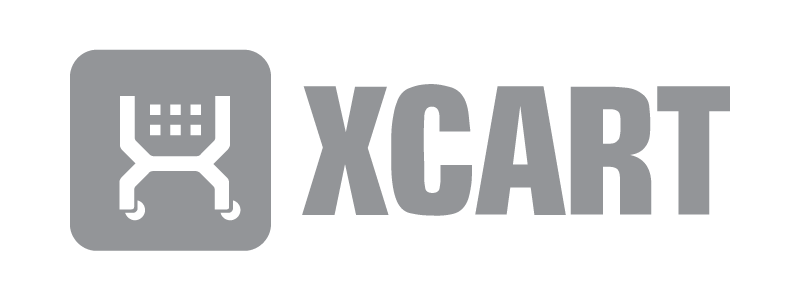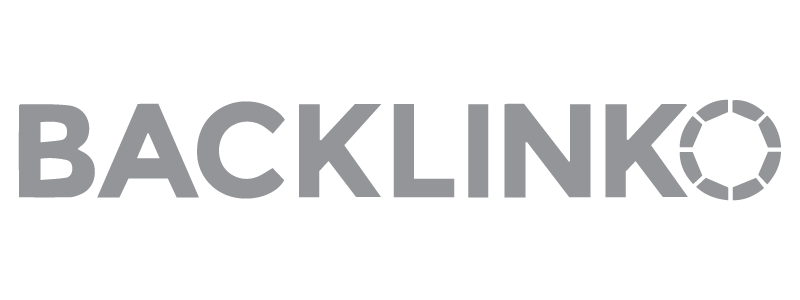What is Amazon FBA Business?
Amazon FBA is short for Fulfillment by Amazon. In simple terms, an Amazon FBA business allows you, as the seller, to choose the products and services you want to sell. You find a supplier, order the products, then package and ship everything to Amazon. The products are stored in one or more of Amazon’s warehouses and then sent to customers who order.
It’s an easy way for third-party sellers to offer Amazon Prime benefits to their customers. If you want to take advantage of the world’s largest online marketplace but you don’t want the hassle of handling order fulfillment, this is the way to do it.
How to Start an Amazon FBA Business
It’s pretty easy to get started with your own Amazon FBA business, but the more research you do ahead of time, the better off you’ll be. There’s plenty of competition out there. Jumping in without doing your homework could cost you.
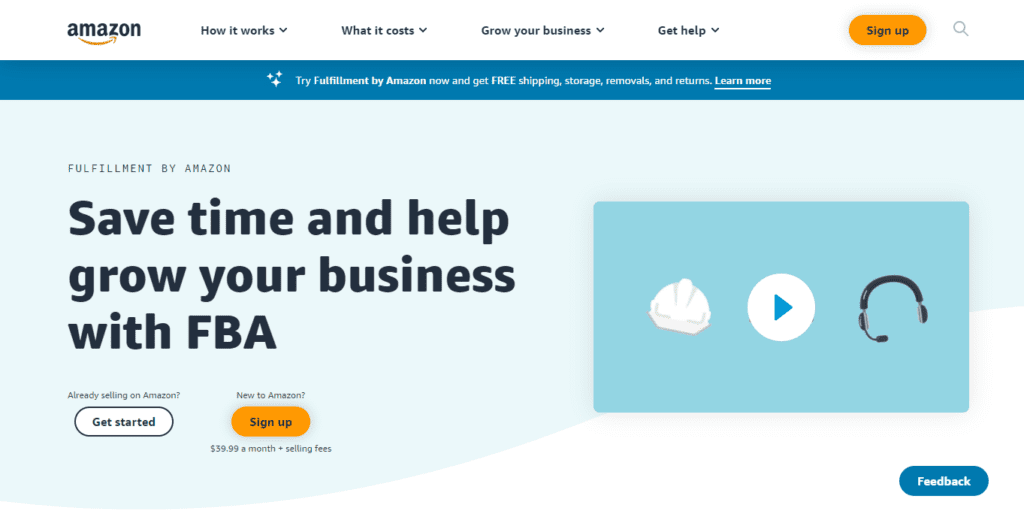
Choose Your Niche
The first step is the hardest and will take most of your time. Picking your niche (and the first products) makes or breaks your online business. If you choose something with little to no demand, is highly competitive, or expensive to purchase in bulk, you may not get the profit you were counting on.
This takes brainstorming, market research, and learning your supplier options.
Start by making a list of the things you’re passionate about and knowledgeable about. Think as broadly as possible – the time for narrowing things down comes later. As you come up with your list of ideas, think about niche product categories. For instance, “fashion” may be too broad, but “women’s fashion” is more niche.
Do you already have a blog or social media following? Leverage this to help you. For instance, if you love food and cooking and your followers know that, they are more likely to trust you when you start marketing your new line of kitchen tools and gadgets.
By choosing something you’re already passionate about, it’ll be much easier to write about it on your blog or create podcast content around it. Your followers will be able to sense the authenticity behind it.
How to Find Products to Sell
Search your product idea on Amazon and other major retailers. Take a look at the price. Aim for something that’s more than $10 but less than $50. Why? That’s the target price range for impulse buys. Impulse buys are likely to turnover stock faster.
Next, use Amazon keyword tools to get an idea of how many people are searching for certain keywords. This will help you make sure there’s a demand for your chosen product – and can help you find the words and phrases you should use in your product’s title and description.
Now, use the Best Sellers Rank (BSR) on Amazon. The ratings show you where there is a demand for the product. This alone should not be what you base your decision on. However, if you notice that a particular item dominates a product category, it may indicate the category is too competitive for your first product.
Take a look at the first three to five products on the seller page within a given category. The lower the BSR number, the more it sells, and the higher it is ranked.
If a lot of products within the category have low BSRs, you’re looking at a highly competitive category. If there are many products with higher BSRs, this could be easier to start with since there’s not as much competition.
You can use Amazon product research tools to help you conduct your product research. With these tools, you can determine competition, demand, FBA fees, and more.
Once you’ve narrowed down your choice to a handful of best products or a product category, Amazon has resources to help you determine the FBA fees associated with the product. A product’s fulfillment fees vary based on a variety of factors, including:
- Product size
- Product shape
- Product weight
When you choose to sell products on Amazon, you do not want your first product to be something that competes with brand names or highly recognized and well-established products. It can be hard to start your Amazon FBA business in a product category with well-established products with high ratings. If you find that most of the products in a category have more than 50 customer reviews and rank high on the BSR, it indicates the category is likely too competitive to start with. You can try to break into it later when you’ve gained traction elsewhere.
Source Your Products
Depending on what your research reveals and the type of business model you want to use with your Amazon FBA business, there are multiple ways to source your products.
Retail Arbitrage
Retail arbitrage sellers find sale and clearance products at local retail stores. They list them for a profit on Amazon. With the Amazon Seller app or another barcode scanning app, you can scan individual products to see how much they are selling for on Amazon and how much you’d pay in fees to sell the item. If you can find items that have at least a $3 profit, you should consider listing them.
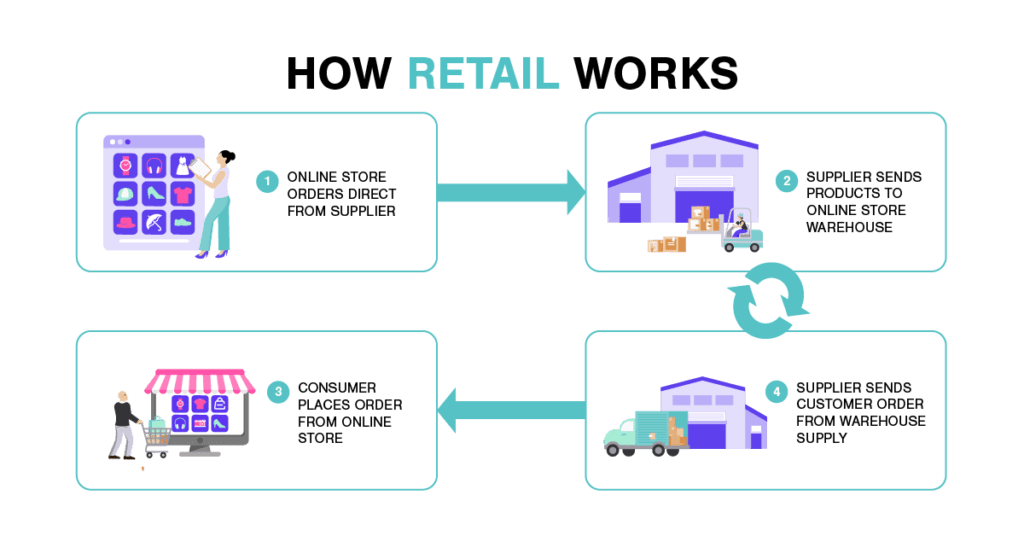
If you don’t have many retailers in your local area, you can use a variation of this, known as online arbitrage. Instead of physically shopping the retailers, you place online orders for the products.
Wholesale
At this point, you know what kind of product you’re going to sell, but it’s not time to relax quite yet. You need to find a supplier for your products – and to make the most money, that typically means sourcing your products from outside the United States.
Google is a great place to start. As you research, take notes on minimum order requirements, unit prices, regions they supply, lead times, etc. This can help you evaluate the suppliers and make your final choice easier.
One way to combine wholesale with retail arbitrage is to look for wholesale lots on websites like eBay.
Private Label
Using this approach, you create a brand of your own with an existing product. Private label products are those that are common but generic enough to brand yourself. Walmart has Great Value, Mainstays, and Equate, for instance. Amazon has Amazon Basics and Amazon Essentials. If you want to create a private label brand, it’s best to avoid products that would directly compete with Amazon.
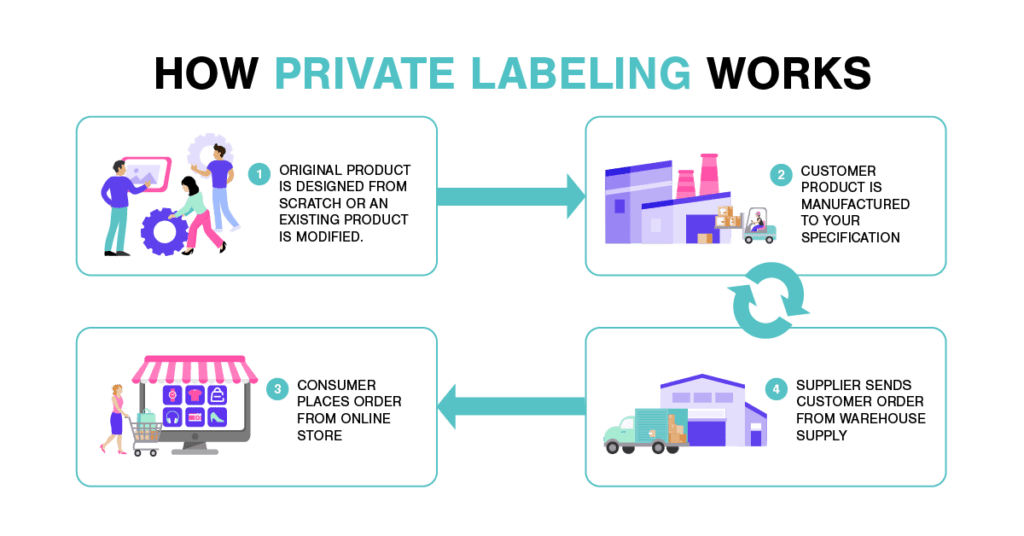
Alibaba is a common private label supplier, but they’re not the only game in town. If you want to start your own private label brand, spend time researching other private label sellers on Amazon and off. This will help you not only with selling on Amazon but also with your overall business strategy.
How to Establish Your Own Brand
Regardless of whether you want to build a long-term brand or just choose something that goes with your first product, your brand is a core part of your marketing strategy.
To get started with your Amazon business, you’ll need a seller name and a product brand name.
Your seller name is the company that every product you sell on Amazon falls under.
Your product brand name. You can have a separate brand name for each of your product listings. If you sell something in the kitchen category, you can have a kitchen-like brand name. If you sell a pet product, you can have another brand name for that, and so on. You set up each brand under your main company.
Amazon provides the following guidelines for creating your seller name:
“Your seller display name is displayed with your listings and on your Seller Profile. Sellers are generally allowed to be descriptive or fanciful as they like when creating their display names. There are a few constraints, however.”
- Each seller has to have a unique display name.
- Display names cannot have the word “Amazon” or any other Amazon domain name or trademark.
- You, as the seller, must have all necessary rights to your display name.
- Only letters, numbers, and “-” or “_” are allowed. No other special characters are allowed.
- No profanity or offensive display names are allowed.
- For readability, display names are suggested to be less than 20 characters long.
Spend a bit of extra time here, but don’t let it become a major roadblock. You can change your brand name and design later. Consider your market and how your brand would resonate with them. But, if you’re struggling to come up with something, you can go ahead and get started.
Brand Design
When it comes to branding, you have a couple of options. You can either brand the product itself, brand the packaging, or brand both the product and the packaging.
You can brand the product itself by printing on the product or adding stickers.
You will incur a cost from the manufacturer because of what they need to do to set up the branding for your product and packaging. You’ll also need to consider the costs of designing the brand.
If you’re the creative type, you can design the brand yourself. If not, you can hire someone on a freelance platform like Upwork or Fiverr to do it for you.
Ask the manufacturer to provide photos of sample packages along with the dimensions and their design specifications. Send that information to your designer. Provide the final design back to the manufacturer. They’ll print the design on your product or packaging.
Create Your Amazon Seller Account
Visit sell.amazon.com. If you’re sure you’ll sell more than 40 items a month, opt for the professional seller account. This flat rate $39.99/month plan does not charge a per item selling fee.

If you aren’t ready to commit to a flat monthly fee, you can sign up for the individual seller plan. Under this structure, you’ll pay a fee of $0.99 per item selling fee.
Follow the on-screen instructions to complete your sign-up. You’ll need to have your bank account information ready so that Amazon can pay you when it’s time. You’ll also need a credit card to pay the account fees to get started.
Sign up for Fulfillment by Amazon
Once you’ve signed up for your Seller Account, you can add FBA services to your account.
After you’ve added your products to the Amazon catalog, you’ll be able to specify your FBA inventory.
Ship Your Product to the Amazon Fulfillment Center
Once you’ve signed up for your Amazon FBA account, you’ll receive instructions on how to pack and ship your items to the Amazon warehouses. Follow these instructions, and once your items arrive at the warehouse, you’ll be ready to sell on Amazon.
If you do not want to prepare your products yourself, you can have Amazon do it for you – for an extra fee.
Launch Your Products on Amazon
When you’ve made it this far – the work is really just beginning. Having your product listed for sale on the Amazon marketplace will give you a certain amount of traffic, but there’s still a lot you can do.
Optimize Your Product Description
You know your product is excellent; otherwise, you wouldn’t have selected it. The product description is where you convince your audience that your product is awesome, too. If you don’t already understand search engine optimization (SEO) concepts, take some time to study up.
Use the keywords you found during your product research phase to help you craft your product title. In addition to the keywords, it should also include your product’s brand name and (if you have one, your private label).
Beyond the copy itself, you should include high-quality product images. If you don’t have the photography skills or equipment to take product photos, invest in it. Your product photos should demonstrate the features of a product and show it from a variety of angles. Remember, your shoppers cannot touch the product, so your photos have to do a lot of work.
Craft bullet points that provide specific details. Go beyond listing the features and specifications. Instead of saying, “Durable,” describe exactly what makes it durable. How is it constructed? What material is it made of? Take a look at these bullet points on a KitchenAid stand mixer listing for inspiration.
What’s important is understanding that this is an ongoing process with a bit of trial and error. You can use split-testing tools like Splitly to help you optimize your product listings to make sure you’re getting the best sales performance possible.
Market Your Product
With your product listing live on Amazon, it’s now time to start marketing your product to a larger audience. Amazon Marketing Services has a variety of advertising methods you can use to build a larger audience. One of the most cost-effective ways to advertise is with pay-per-click (PPC) ads.
Your products will show in relevant searches as a “Sponsored Product,” and you’ll only pay when someone clicks your ad.
Beyond Amazon, you can also use PPC ads on Facebook and other social media platforms to reach more customers. With Facebook’s targeting, you can get highly specific with the people you’ll target. And thanks to their budget rules, you can tailor your ads to a certain daily or lifetime budget.
Get Product Reviews
Product reviews are an important part of your sales rank. It’s easy to pay for a bunch of fake reviews. And as easy as that is, don’t do it. Instead, reach out to your friends, family, and other people you know who may be interested in the products you offer. Give them the product in exchange for an honest review.
Consider working with influencers in your niche to get product reviews. Beyond the reviews themselves, the influencers will share your product and their thoughts with their audience. That helps build your following and brand awareness – even if no one makes a purchase right away.
Once you make some sales, reach out to the customers and ask them to leave a review of your product.
Keep an Eye on Amazon Seller Central
Paying attention to what’s going on with your product listing will help guide your strategy. You’ll see analytics information that makes it easy for you to test, adjust, and keep things moving.
Build Your Audience Off Amazon
To truly be successful on Amazon, you have to build an audience off Amazon. One of the best things you can do for your business is to set up an email list.
How Much Does FBA Cost?
Amazon charges fees to all sellers. The commission you’ll pay depends on the category your item is listed in. The cost is taken out after the sale. You can find out how much it will cost to sell an item by scanning its barcode with the Amazon Sellers App.
It’s worth noting that Amazon also charges refund fees. You’ll pay either 20% of the charge refunded, or $5, whichever is less.
Those fees are separate from Amazon FBA Seller fees.
What you’ll pay depends on the weight and size of the time that’s sold, packed, and shipped. You can see what the fees currently are here: The fees are subject to change at any time.
You’ll pay storage fees every month. There are additional long-term fees for inventory that doesn’t sell after a certain period. Monthly storage fees vary, depending on the amount of space, in cubic feet, that your inventory occupies. Long-term storage fees apply to anything that remains after 12 months.
If you grow your Amazon FBA business to more than 100,000 ASINs, you’ll be charged a fee of $0.005 per ASIN.
Closing fees apply to certain products such as books, CDs, and DVDs.
FBA Fees vs. Shipping Costs
As a Fulfillment by Amazon customer, you will pay FBA fees rather than shipping costs. You do not have to pay for shipping, handling, or packaging to ship your goods to customers.
If you ship your products yourself, you’ll pay shipping costs. These costs vary from carrier to carrier and are based on the size and weight of your products. You may or may not qualify for shipping discounts.
For the average third-party seller, FBA sales are worth the fees. Since it removes the need to pay for shipping, store, pick, pack, and ship the items, it’s a lot less stressful for the business.
FBA vs. Non-FBA: Cost Examples
Let’s take a closer look at what FBA could cost you.

In the first example, you’ve got a small paperback book that weighs less than 10 ounces. As a “small standard” product, the fulfillment fee is $2.50. Let’s add another dollar to cover your storage costs.
The product starts at a $14.99 retail price.
In both cases, there’s a $4.05 Amazon seller fee.
With DIY fulfillment, you pay $3 in fulfillment costs. With FBA, you pay $4.90.
With DIY fulfillment, you pay 50 cents in storage fees. With FBA, you pay 60 cents.
And once you subtract the $3 unit cost, you earn a $4.44 profit without FBA and $2.44 profit with FBA.
In the case of smaller items, using Amazon FBA isn’t the clear winner. But let’s take a closer look at what a larger item would be in the same scenario. With Amazon FBA, your items are more profitable because there’s a chance to save on fulfillment costs.
The 32” TV starts at a $259 retail price. With FBA, there’s no shipping fee, so you only pay $20.72 to Amazon in commission.
In DIY fulfillment, you add a $20 shipping fee. That brings your Amazon fee to $22.32 because of the additional revenue.
You have a $40 cost with DIY fulfillment because of the shipping, supplies, labor, and customer service. With Amazon FBA, that cost is only $17.40. Your storage cost is $1 with DIY and 90 cents with Amazon FBA.
By the time you deduct all of this and the cost of the TV itself, you’re left with $16.68 profit with your own fulfillment and $20.98 with Amazon FBA. That brings your net margin from 5.98% with DIY to 8.10% with FBA. The fulfillment fees are much more affordable with larger items because of the shipping and storage discounts Amazon can leverage.
Amazon FBA Pros
No Need to Store Your Inventory
Since you ship everything to Amazon, you don’t have to worry about keeping everything in your home. Yes, you’ll pay for warehouse space, but it’s often cheaper than finding and renting your own warehouse. Amazon stores everything for you, and then Amazon ships items to customers on your behalf.
Amazon fulfillment centers are located throughout the United States. You’ll know where to ship your orders based on the instructions Amazon provides. Often, your products are stored at multiple fulfillment centers across the country. This way, our order ships from the closest location to the customer, allowing for fasting shipping.
Amazon Customer Service
As an Amazon FBA customer, your products and services will be eligible for Amazon customer service. They’ll handle customer returns and any other issues related to the products or services you sell.
Your customers will have 24/7 FBA customer support via live chat, email, and phone.
You do still have to provide customer service for orders outside of Amazon. Ultimately, this reduces the amount of time you have to spend addressing customer service issues.
This helps you keep your business running smoothly and ensures you have plenty of time to dedicate to marketing and growing your business.
Eligible for Prime Shipping
Prime customers can get thousands of items shipped for free within two days. Any items handled by Amazon FBA qualify for Prime shipping at no extra cost to you.
Shipping Programs
If you utilize Amazon FBA, you can also participate in other shipping programs, as long as your products are eligible.
Small and Light
The Small and Light program aims to reduce the fulfillment costs for small and lightweight FBA inventory under $7. Products enrolled in this program are eligible for free shipping to Prime customers and standard shipping for non-Prime customers.
To qualify for the Small and Light program, items must be:
- In new condition
- No larger than 18 x 14 x 8”
- No more than 12 ounces in weight
- Priced at $7 or less
If your products qualify, you can enroll at the Small and Light Product enrollment page.
Subscribe and Save
The Subscribe and Save program allows Prime customers to take advantage of recurring orders for the products they use the most. There are two types of Subscribe & Save orders; sign-up orders and replenishment orders.
Frustration-Free Packaging
This service is provided at no cost to customers. Frustration-free packaging is recyclable and contains no extra materials. It’s easy to open because there are no wire ties or pieces of plastic. The program is designed to reduce waste because it ships without Amazon packaging. Even without the additional packing material, the program is certified to minimize damage to items in transit.
Multichannel Fulfillment
If you sell products outside of Amazon, you can still use the Amazon fulfillment center to take care of your shipping. With the MCF service, you can sell on various platforms and still have Amazon handle fulfillment. If your order originates on your website, Amazon will handle it the same way as if it had sold through Amazon.
Buy Box
The Amazon Buy Box is located on the product detail page. It’s what makes it possible for customers to add products to their cart or make one-click purchases. More than 90% of Amazon’s conversions come from the Buy Box.
As a third-party seller, if you can get into that Buy Box, you’ll get more sales. There are many products that Amazon sells themselves from the Buy Box, however. Even still, third-party sellers who offer Prime have a better chance of getting the Buy Box than those who don’t.
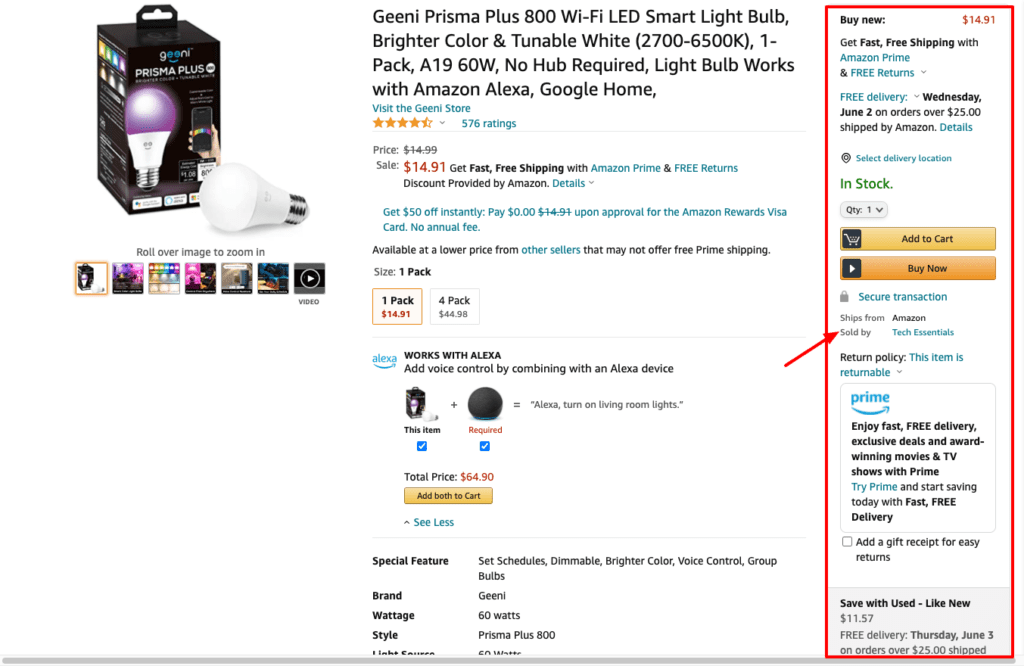
If you want more help optimizing your listings and selling on Amazon, read my Amazon selling tips post.
Amazon FBA Cons
Cost
You’ll pay fees for everything. While it is often more cost-effective than handling inventory and storage on your own, it can really hurt your profits. If you have something with a low margin, you’ll need lots of products or high volume to earn revenue.
Long-Term Storage Fees
If you can’t turn over your inventory quickly, you’ll end up paying Amazon more money. If you’ve got inventory that’s been in Amazon fulfillment centers for more than 365 days, you’ll be charged a monthly long-term storage fee of $6.90 per cubic foot or $0.15 per unit, whichever is greater.
You can check your fee amount on the Long Term Storage Fee report.
If you want to avoid paying those long-term storage fees, keep a close eye on your inventory performance index in Seller Central. It’s what Amazon uses to measure how well your inventory is doing. Low scores could mean limits placed on your storage space and being charged overage fees.
More Customer Returns
Many sellers report that after switching to Amazon FBA, they see an increase in product returns. This is likely due, at least partly, that Amazon has an open return policy. This can affect your overall profits, but it’s not much work on your end since Amazon handles the processing.
In the past, Amazon had returns shipped back to them and then forwarded them to you. Now, Amazon has the products returned directly to you.
Product Preparation Requirements
Amazon has stringent product preparation guidelines. This can be challenging for brand new sellers. If, for instance, you mislabel your inventory, it will be rejected at the fulfillment centers. This leads to delays and more work overall.
Amazon Sales Tax
Every state in the United States has different sales tax collection rules. Because Amazon has fulfillment centers in all the states and shuffles inventory between warehouses, collecting sales tax can become quite complex.
Fee Payment
Your fee payment is made monthly. You won’t be able to pay what you owe from the previous sale with the next one. Amazon will deduct all the fees you owe them before they make any payment to you. And if, for any reason, you don’t have enough of a balance to cover their fees, you’ll have to have a credit card on file to pay any remaining balance.
Inventory Tracking is Difficult
If you’re using FBA outside of your Amazon business, it can be hard to keep track of all your inventory. In MCF, it can be challenging to know when it’s time to send more merchandise – specifically at the item level.
Comingled Inventory May Harm Your Reputation
FBA sellers have all the same products comingled if they are the same products from the same company. Because of this, counterfeit versions of your product could be mixed in with your product. Ultimately, this could be bad for your reputation.
Amazon FBA vs. Fulfilled By Merchant vs. Seller-Fulfilled Prime
If you don’t want to pay fulfillment fees associated with your FBA business, then you can always opt for Amazon Fulfilled by Merchant (FBM). With this program, you’ll still list products for sale on Amazon, but you’ll handle all order fulfillment yourself, either by shipping everything directly or with the use of other advanced fulfillment networks.
If you want to take advantage of the Prime customer base but don’t want to pay Amazon FBA fees, you may want to consider the Seller-Fulfilled Prime (SFP) account.
With this approach, you handle all the picking, packing, and shipping. You pay the shipping costs and handle returns. The costs are typically fixed and don’t fluctuate much.
Under this program, you agree to pack and ship items to your customers within two business days, so they fit within the Prime guidelines.
SFP is a lot more work, so smaller brands tend to better with the Amazon FBA program. But if you have low-cost items or large items that would cost a lot in storage with Amazon, this is the best way to get the Prime badge while still keeping costs down.
Though it’s not always open to customers, it’s worth keeping an eye on if it’s something you’re interested in.
Which one should you choose? Consider the following as you make your choice:
- Size and weight of the products
- How much control you want over the customer experience
- Seller feedback
- Inventory turnover rate
- Logistics
- Fees and expenses
FAQ for Amazon FBA Businesses
Is Selling on Amazon Right for You?
Are you an entrepreneur who’s ready to start selling products on Amazon? Do you already have products for sale on your own site? An Amazon FBA business may be the answer you’re looking for.
If you’re coming to market with a product of your own – Amazon could be a great way to reach new customers. If you’re looking to sell the same things everyone else does, you may struggle. It depends on the competition and whether or not Amazon is a direct competitor. If you’re selling the same private label products that Amazon is, even at the best price, you may not see the volume you were expecting.
After you’ve been working with your first product for a while, you can continue growing your business by adding new product listings regularly. Before you know it, you’ll have a successful FBA fulfillment by Amazon business.




